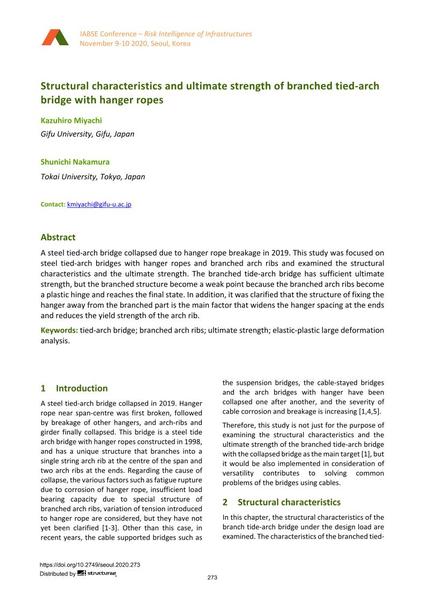Structural characteristics and ultimate strength of branched tied-arch bridge with hanger ropes

|
|
|||||||||||
Détails bibliographiques
| Auteur(s): |
Kazuhiro Miyachi
Shunichi Nakamura (Tokai University, Tokyo, Japan) |
||||
|---|---|---|---|---|---|
| Médium: | papier de conférence | ||||
| Langue(s): | anglais | ||||
| Conférence: | IABSE Conference: Risk Intelligence of Infrastructures, Seoul, South Korea, 9-10 November 2020 | ||||
| Publié dans: | IABSE Conference Seoul 2020 | ||||
|
|||||
| Page(s): | 273-280 | ||||
| Nombre total de pages (du PDF): | 8 | ||||
| DOI: | 10.2749/seoul.2020.273 | ||||
| Abstrait: |
A steel tied-arch bridge collapsed due to hanger rope breakage in 2019. This study was focused on steel tied-arch bridges with hanger ropes and branched arch ribs and examined the structural characteristics and the ultimate strength. The branched tide-arch bridge has sufficient ultimate strength, but the branched structure become a weak point because the branched arch ribs become a plastic hinge and reaches the final state. In addition, it was clarified that the structure of fixing the hanger away from the branched part is the main factor that widens the hanger spacing at the ends and reduces the yield strength of the arch rib. |
||||
| Mots-clé: |
pont bow-string
|
||||
